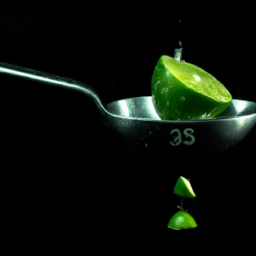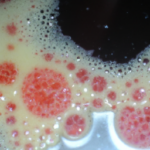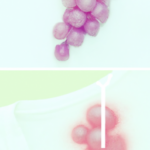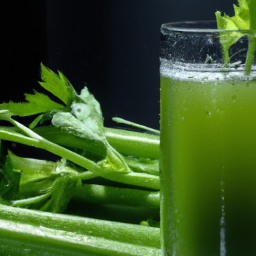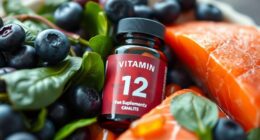Sipping on a tasty cranberry cocktail can be quite delightful, but spilling it on your favorite outfit can be a disaster. I know firsthand how frustrating it can be to try to remove stubborn cranberry juice stains from clothing. But fear not! With a few helpful tips and tricks, you can successfully get rid of those pesky stains and save your garments.
Firstly, it’s essential to act quickly and blot the stain with a clean cloth or paper towel to prevent it from setting in.
Then, rinse the fabric with cold water to remove as much of the stain as possible.
Next, apply a stain remover or laundry detergent directly to the affected area and let it sit for a few minutes.
These are just a few of the many steps that you can take to get rid of cranberry juice stains on clothes.
Keep reading to learn more about how to successfully remove cranberry juice stains and rescue your beloved garments from the clutches of stubborn stains.
Key Takeaways
- Act quickly to prevent the stain from setting in.
- Use cold water and avoid hot water, fabric softeners, or bleach.
- Apply a stain remover or laundry detergent directly to the affected area.
- Soak the garment in a mixture of water and vinegar or hydrogen peroxide.
Act quickly and blot the stain
You’ll want to act fast and grab a clean cloth to blot the cranberry juice stain before it sets in too deep. Blotting technique is essential when it comes to removing cranberry juice stains. Gently press the cloth onto the stain, starting from the outside and moving inwards. Avoid rubbing the stain as it can cause it to spread and set in further.
It’s important to keep blotting until the cloth no longer absorbs any juice. This will ensure that you’re removing as much of the juice as possible, making the next step easier. The importance of quick action cannot be emphasized enough when it comes to removing cranberry juice stains.
The longer you wait, the more difficult it becomes to remove the stain. Once you’ve finished blotting, move on to the next step of rinsing the fabric with cold water. By acting quickly and using the blotting technique, you’re taking the first step towards effectively removing the cranberry juice stain from your clothes.
Rinse the fabric with cold water
After a spill, the first step is to give the affected area a thorough cold water rinse. This is an essential step in preventing stains from setting in. Rinsing with cold water helps remove the excess cranberry juice from the fabric and prevents it from becoming a permanent stain.
When rinsing the fabric, it’s important to avoid using hot water as it can set the stain in. Instead, use cold running water to flush out the stain. Hold the fabric under the faucet and let the water run through it until the water runs clear.
Once the fabric is rinsed, gently wring out the excess water, and move on to the next step of applying a stain remover or laundry detergent directly to the stain.
By following these tips for rinsing fabric, you can effectively remove cranberry juice stains from your clothes without causing any further damage. With a bit of patience and care, your clothes will look as good as new in no time.
Apply a stain remover or laundry detergent directly to the stain
To effectively remove the stubborn cranberry juice stain, it’s time to take action with a pre-treatment. The first step is to apply a stain remover or laundry detergent directly to the affected area. Be sure to carefully follow the instructions on the product, as some may require a certain amount of time to set before washing.
Alternatively, you can also use a homemade solution of equal parts water and white vinegar to pre-treat the stain. Preventing cranberry juice stains in the first place is always the best course of action. However, accidents happen, and it’s important to know how to remove them properly.
After applying the pre-treatment, the next step is to soak the garment in a mixture of water and vinegar. This will help to further loosen the stain and ensure that it is fully removed during the wash cycle.
Soak the garment in a mixture of water and vinegar
Once the stain remover or laundry detergent has been applied, let the garment soak in a mixture of water and white vinegar to ensure the stain is fully lifted.
Vinegar is a natural and effective way to remove stains from clothing. It not only helps to lift the stain, but also helps to deodorize and disinfect the garment.
One of the benefits of using vinegar in laundry is that it’s a natural fabric softener. It helps to break down any residue left behind by laundry detergent, leaving clothes feeling softer and fresher.
Additionally, vinegar is a great alternative to harsh chemical stain removers, which can be damaging to both the fabric and the environment. However, if vinegar isn’t available, there are other alternatives for stain removal, such as hydrogen peroxide.
Try using hydrogen peroxide
You might want to consider using hydrogen peroxide as a stain remover for your garments. It’s a powerful and effective alternative to traditional stain removers, and can easily get rid of tough stains such as cranberry juice. However, before using hydrogen peroxide, it’s important to understand its potential effects on different fabric types and consider hydrogen peroxide alternatives.
Here are some things to keep in mind when using hydrogen peroxide as a stain remover:
- Dilute the hydrogen peroxide with water before using it on your garments to prevent potential fabric damage.
- Test a small, inconspicuous area of the garment first to make sure the hydrogen peroxide won’t cause any discoloration or damage.
- Apply the hydrogen peroxide directly to the stain and let it sit for a few minutes before washing the garment as usual.
- Be sure to wash the garment immediately after using hydrogen peroxide to prevent any further damage.
If hydrogen peroxide isn’t the right solution for your specific garment, there are other alternatives such as vinegar or baking soda that may be more suitable. However, if you do choose to use hydrogen peroxide, be sure to take the necessary precautions to prevent any potential fabric damage.
In the next section, we’ll discuss how to apply a paste made of baking soda and water to effectively remove cranberry juice stains.
Apply a paste made of baking soda and water
I’ve tried hydrogen peroxide before, but it didn’t quite do the trick in removing cranberry juice stains from my clothes. Luckily, I found another household item that can help me out: baking soda.
Not only is it affordable and easily accessible, but it also has numerous benefits for cleaning and stain removal. To use baking soda, simply mix it with water to create a paste and apply it directly to the stained area.
Let it sit for a few minutes before gently scrubbing it with a soft-bristled brush or cloth. Then, wash the garment as you normally would. Baking soda not only helps to lift the stain, but it also deodorizes and brightens the fabric.
Tips for removing stains with baking soda include using it on fresh stains as soon as possible, testing it on a small, inconspicuous area of the garment first, and avoiding using too much water in the paste mixture.
Baking soda is a great natural alternative to harsh chemicals and can be used on a variety of stains, not just cranberry juice. Now, if baking soda doesn’t do the trick, it’s time to move on to a commercial stain remover specifically designed for cranberry juice stains.
Use a commercial stain remover specifically designed for cranberry juice stains
For best results, try a stain remover that specifically targets those stubborn cranberry stains on your garments. A commercial stain remover designed for cranberry juice stains will work best in getting rid of the stain. These stain removers contain enzymes that break down the stain and remove it from the fabric.
Preventive measures, such as wearing an apron or being careful while drinking cranberry juice, can help avoid stains altogether. However, if a stain does occur, there are alternative stain removers that can be used. For instance, rubbing alcohol or vinegar can be applied to the stain and left to sit for a few minutes before being washed off. Regardless of the method used, it is important to act quickly and remove the stain before it sets in. Once the stain is removed, the garment can be washed in the washing machine on a cold cycle.
Wash the garment in the washing machine on a cold cycle
After using a commercial stain remover for cranberry juice stains, it’s important to wash the garment in the washing machine on a cold cycle. This will help remove any remaining stain and prevent it from setting in further. It’s important to note that using hot water can actually make the stain worse, so stick to cold water for best results.
When washing the garment, it’s also important to choose the right laundry detergent. Look for a detergent that’s specifically designed for removing tough stains, such as cranberry juice. It’s also a good idea to avoid using fabric softeners or bleach, as these can actually make the stain worse. Instead, opt for a detergent that’s gentle on fabrics but tough on stains.
Use a stain remover before washing to help lift the stain.
Avoid using hot water, as it can set the stain in further.
Choose a laundry detergent specifically designed for tough stains.
Don’t use fabric softeners or bleach, as they can make the stain worse.
Wash on a cold cycle to prevent the stain from setting in further.
After washing the garment, it’s important to check the stain before drying and repeat the process if necessary. If the stain is still present, try using a stain remover again before washing. By taking these steps, you can effectively remove cranberry juice stains from your clothes and prevent them from setting in for good.
Check the stain before drying, and repeat the process if necessary
To ensure that the stain is completely gone, don’t forget to check it before throwing the garment in the dryer. Can’t imagine the disappointment of pulling it out and realizing the stain is still there? Take a close look at the area where the stain was and see if it’s completely gone. If there’s still a hint of red, then repeat the process until it’s completely gone.
When it comes to repeat process tips, it’s important to remember that you should use the same method you used before. If you used a stain remover, then repeat the process with the same remover. If you used vinegar and water, then repeat the same ratio and steps. It’s also important to keep in mind that some stains can be particularly stubborn, so don’t be discouraged if you need to repeat the process more than once.
Once you’re confident that the stain is gone, it’s safe to dry the garment. But before you do, it’s important to follow some drying precautions to avoid setting in any remaining stain.
Avoid using heat on the stain until it is fully removed
Make sure not to use any heat on the stained area until it’s completely removed to prevent setting the stain in further. Applying heat to the stain can cause the fibers of the fabric to absorb the juice, making it more difficult to remove.
Instead, use cold water to rinse the stain and gently rub the affected area with a cloth or sponge. To prevent discoloration and further damage to your clothes, consider following these steps:
- Start by rinsing the stained area with cold water as soon as possible.
- Use a gentle rubbing motion to work the stain out of the fabric, being careful not to damage the fibers.
- Repeat the process as necessary until the stain is fully removed.
By avoiding the use of heat and using gentle rubbing, you can effectively remove cranberry juice stains from your clothes without causing any further damage. Remember to act quickly and be patient, as removing the stain may take some time and effort.
Frequently Asked Questions
What if the cranberry juice stain has already dried before I noticed it?
Oh no! If a cranberry juice stain has already dried, don’t worry. Prevention tips for future stains are key, but for now, try a pre-treatment stain remover and wash in hot water. This method also works for other types of stubborn stains.
Can I use warm water instead of cold water to rinse the fabric?
When it comes to stain removal, the temperature of the water matters. Hot water can set stains while cold water helps lift them. The Science Behind Different Water Temperatures for Laundry is clear: use cold water to rinse fabric.
What if the stain remover or laundry detergent doesn’t work?
If the stain remover or laundry detergent doesn’t work, I suggest trying alternative remedies like vinegar or lemon juice. If all else fails, seeking professional help from a dry cleaner may be necessary.
How long should I soak the garment in the water and vinegar mixture?
For optimal soaking time, I recommend leaving the garment in the water and vinegar mixture for at least 30 minutes. Vinegar is effective in breaking down stains. If the stain persists, try alternative stain removal methods such as using baking soda or hydrogen peroxide.
Can I use bleach to remove the stain?
I wouldn’t recommend using bleach to remove stains as it can damage the fabric. Instead, consider using bleach alternatives such as hydrogen peroxide or pre-treating techniques like applying dish soap or vinegar before washing.
Conclusion
Well, that was quite the adventure. Who knew cranberry juice could be so stubborn when it comes to stains? But fear not, I’ve successfully removed the offending red splotch from my favorite shirt, and I’m here to share my wisdom with you.
First and foremost, remember to act quickly and blot the stain as soon as possible. Don’t let it set in! From there, try a variety of methods, from rinsing with cold water to using hydrogen peroxide.
And if all else fails, there are commercial stain removers out there specifically designed for cranberry juice stains. In the end, the key is to be persistent and patient. Don’t give up after one attempt, and don’t rush to dry the garment until you’re sure the stain is fully removed.
With a little effort and determination, you too can triumph over the dreaded cranberry juice stain. Happy laundering!
Ilana has been a vegan for over 10 years. She originally made the switch for health reasons, but soon found herself becoming more and more passionate about the ethical and environmental implications of a vegan lifestyle. Ilana is the author of The Graceful Kitchen, a blog all about veganism. She loves to cook up delicious and nutritious vegan meals, and share her recipes with others who are interested in leading a cruelty-free life. Ilana is also a strong advocate for using whole foods as the foundation of a healthy diet, and believes that going vegan is one of the best ways to achieve this.

